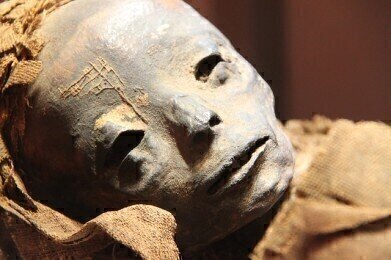GC, MDGC
Gas Chromatography Reveals the Owner of Ancient Mummified Legs
Feb 06 2017
An international team of archaeologists have identified a pair of mummified legs as belonging to Queen Nefertari, the royal wife of Pharaoh Ramses II — possibly the most powerful pharaoh in Egypt’s history. Nefertari’s opulent tomb was discovered in Egypt’s Valley of the Queens in 1904 by Italian archaeologists, with the remains being kept in a museum in Turin.
But when the tomb was found in 1904 — lying in the tomb was a pair of mummified legs. And for the past 100 years, no one knew just who they belonged to. Could they be Queen Nefertari’s legs? Or could they have been dumped there later — there is a long history of tombs being reused. But following a concerted effort by the team of archaeologists utilising the latest forensic tools — including chromatography — they believe they have the answer to the mystery of the mummified legs.
Nefertari — favourite wife of Ramses II
Nefertari’s tomb is famous as one of the most beautiful tombs in the Valley of the Queens — as befits the favourite wife of one of Egypt’s most powerful pharaohs. She is thought to have been a powerful woman behind the throne, who probably came from a non-royal line, although her exact parentage is unknown. Ancient Egyptian scholars put Nefertari’s death around 1255 BCE, around 3200 years ago, at the age of about 40 to 50 years old.
Although her tomb was plundered in ancient times, it was rediscovered and excavated in 1904 when the objects that were found were sent to a museum in Turin, Italy. Amongst the objects were the mummified legs. It was not known whether they were from the original burial or whether they were interred later. It was this question — who do the legs belong to — that the team set out to answer.
Unwrapping a mummified mystery
The group used x-rays to confirm that the legs were human and to get an idea of the sex, height and age of the person entombed. This confirmed that the legs belong to an adult woman who died in her 40s — fitting in nicely with the ideas regarding Queen Nefertari’s death.
They then used chemical analysis to investigate the wrappings on the body. Gas chromatography (GC) revealed that the compounds used in the embalming process during mummification. More recent developments in GC are discussed in this article, Miniaturisation in GC Laboratories - the Holistic Picture.
The results suggest that a non-human animal fat was used, which would be expected from the wrapping of an elite member of a royal household around the time Nefertari died. Other results also point to the legs being interred around the time Nefertari died.
The researchers conclude that:
Another mummy mystery solved and no need for Shaggy and Scooby.
Events
Apr 22 2025 Kintex, South Korea
Analytica Anacon India & IndiaLabExpo
Apr 23 2025 Mumbai, India
Apr 27 2025 Portland, OR, USA
May 11 2025 Vienna, Austria
May 18 2025 Tempe. AZ, USA














